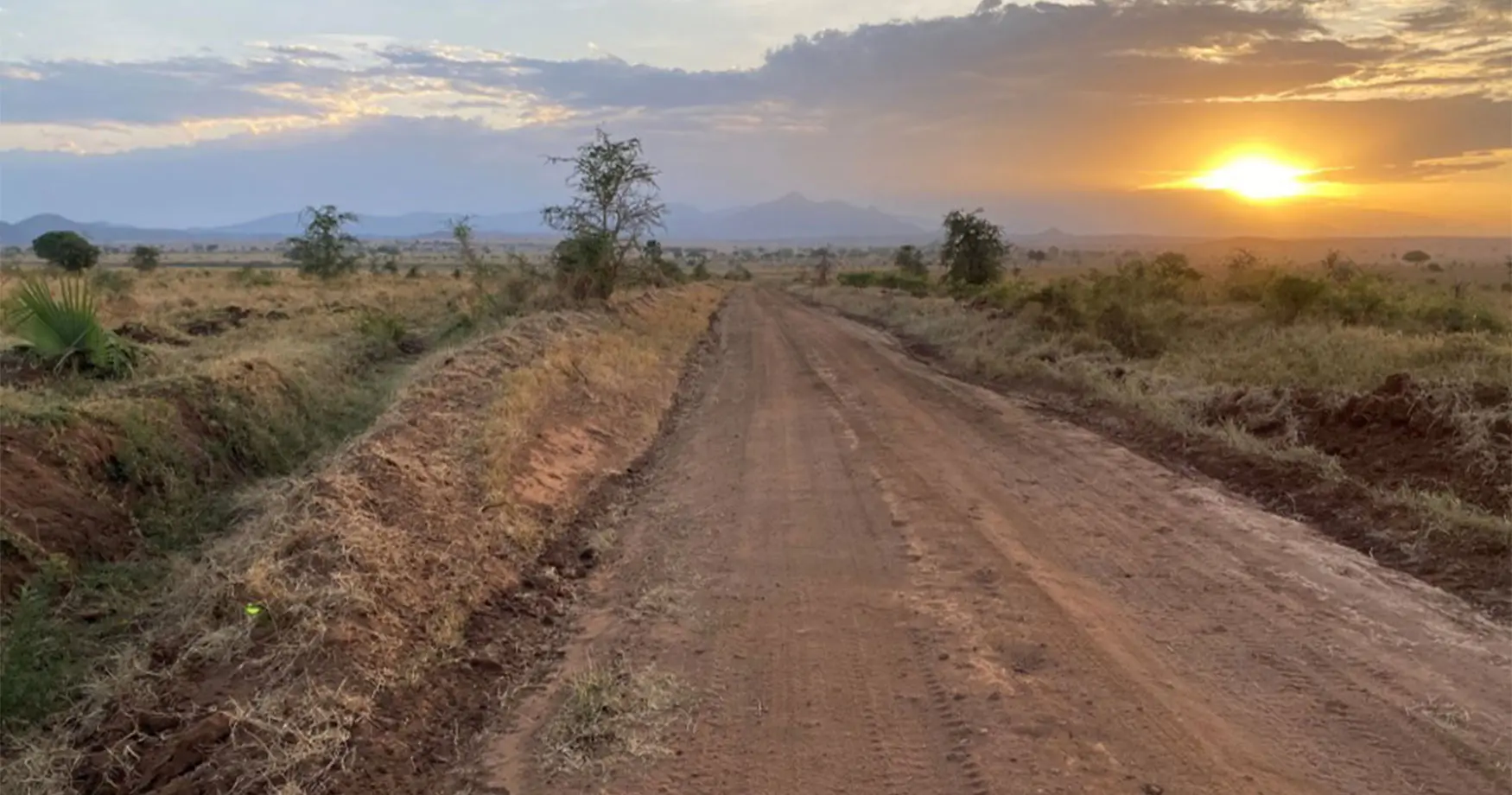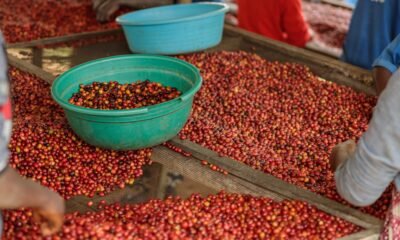Business
Uganda Overtakes Tanzania in GDP Per Capita
This information comes from the International Monetary Fund’s (IMF) projections for 2025.

In a significant shift within East Africa’s economic landscape, Uganda has surpassed Tanzania to become the second-richest country in the region by GDP per capita, following Kenya. This information comes from the International Monetary Fund’s (IMF) projections for 2025. According to the IMF’s October 2024 World Economic Outlook (WEO), Uganda’s GDP per capita is estimated at $1,300, narrowly exceeding Tanzania’s $1,270, while Kenya leads the region with a GDP per capita of $2,190. Rwanda, often referred to as the “Singapore of Africa” due to its aggressive development model, has a GDP per capita of approximately $990 to $1,022. This development is a significant moment for Uganda, highlighting years of economic progress and strategic investments, even as broader regional dynamics and global economic conditions influence these results.
GDP per capita, calculated by dividing a country’s total economic output (GDP) by its population, provides insight into average economic well-being. The IMF’s 2025 projections indicate:
- Kenya: $2,190 – Solidifying its status as East Africa’s economic powerhouse.
- Uganda: $1,300 – A notable advance, overtaking Tanzania by a slim margin.
- Tanzania: $1,270 – A slight decline relative to Uganda, despite having a larger overall economy.
- Rwanda: Approximately $990 to $1,022 – Experiencing steady but slower growth compared to its neighbors.
These figures contrast with 2023 data from the World Bank, where Kenya stood at $1,952.3, Tanzania at $1,224.5, and Uganda at $1,002.3. The IMF’s forward-looking estimates suggest that Uganda’s per capita income has grown significantly, driven by a projected real GDP growth rate of 6.0% in 2024 and 7.0% in 2025, outpacing Tanzania’s expected 5.4% and 6.0% growth for the same period.
Uganda’s economic rise can be attributed to a combination of structural reforms, growth in various sectors, and strategic investments particularly in its emerging oil sector. Here are the key drivers:
- Oil and Gas Boom: Uganda’s oil sector is approaching commercial production, with projects like the East African Crude Oil Pipeline (EACOP) and the Tilenga and Kingfisher fields poised to enhance revenues. While actual production is expected to begin around 2025-2027, preparatory investments have already spurred economic activity, attracting foreign direct investment (FDI) and stimulating related sectors such as construction and logistics.
- Diversified Growth: Beyond oil, Uganda has shown strong performance in mining, construction, and hospitality. The African Development Bank reported a 4.6% GDP growth in 2023, decreasing from 6.3% in 2022, but projections for 2024 and 2025 suggest a rebound driven by consumer demand and regional trade. Although agriculture still employs 70% of the workforce, higher productivity sectors like services and manufacturing are emerging.
- Population Dynamics: With a population of approximately 49 million, Uganda’s economic gains are translating more effectively into per capita terms compared to Tanzania’s larger population of 65 million. This balance allows Uganda’s GDP growth to have a more direct impact on individual income levels.
Tanzania has experienced steady but relatively slower per capita growth compared to its neighbors. In 2023, the country’s economy grew by 5.2% and is projected to grow by 5.4% in 2024 and 6.0% in 2025, according to the IMF. Key drivers of Tanzania’s economy include agriculture, manufacturing, and tourism, along with public investments and business-friendly reforms under President Samia Suluhu Hassan. However, Tanzania’s larger population dilutes its per capita figures. Its total GDP ($79.06 billion in 2023) significantly exceeds that of Uganda ($48.77 billion), highlighting the distinction between overall wealth and per capita metrics.
Kenya maintains its leading position due to its diversified and industrialized economy, which encompasses sectors such as finance, technology (e.g., M-Pesa), and agriculture, with a projected GDP growth rate of 5.0% to 5.5% for 2025. Meanwhile, Rwanda, despite its effective governance and urban development, faces challenges due to its smaller economic base. Its GDP per capita is increasing but still lags behind its regional counterparts due to reliance on tourism and agriculture.
Uganda’s economic ascent is not without challenges. The country’s public debt-to-GDP ratio rose to 49.6% in 2023, which is considered sustainable but indicates a need for fiscal discipline as oil revenues begin to ramp up. Additionally, poverty has increased, from 21.4% in 2017 to 30.1% in 2020, highlighting that per capita gains have not yet reached all segments of the population. Tanzania is currently facing tight financing conditions and exchange rate pressures, although its inflation remains low at 3.0%-4.0%. Kenya is grappling with debt servicing costs, while Rwanda’s high growth, projected at 7%-8%, is moderated by its smaller economic base.
Globally, the IMF forecasts a 3.2% growth rate for 2025, with Sub-Saharan Africa projected to grow at 4.0%-4.2%, suggesting that East Africa remains a bright spot. If Uganda manages its oil-driven trajectory effectively, it could solidify its position in the region. Still, Tanzania’s larger economy and Kenya’s regional dominance ensure a competitive landscape.
While the claim about which country is the “richest” hinges on GDP per capita, this perspective is somewhat narrow. Total GDP reflects a country’s economic size, in which Tanzania and Kenya outpace Uganda. Using purchasing power parity (PPP) or assessing wealth distribution might yield different rankings. Nonetheless, Uganda’s emerging status underscores its potential as a rising player in the region, reshaping narratives once dominated by Kenya and, to a lesser extent, Tanzania.
Business
Uganda’s Kitgum-Kidepo Road Upgrade
Following the reintegration of the Uganda National Roads Authority (UNRA) into the MoWT in 2024, the ministry has taken full responsibility for delivering this vital project.

In a landmark decision, Uganda’s Parliament has authorized the government to secure a loan of €110.5 million (approximately Shs 450 billion) from Standard Chartered Bank. This funding will go towards upgrading the 115.8-kilometer Kitgum-Kidepo Road, a crucial infrastructure project that will connect the Kitgum and Kaabong districts in northern Uganda. The project aims to enhance tourism, improve regional connectivity, and address the socioeconomic challenges faced by the impoverished Karamoja subregion.
The Kitgum-Kidepo Road Project, led by the Ministry of Works and Transport (MoWT), involves rehabilitating an existing gravel road that extends from Kitgum town to the outskirts of Kidepo Valley National Park. Following the reintegration of the Uganda National Roads Authority (UNRA) into the MoWT in 2024, the ministry has taken full responsibility for delivering this vital project. The upgrade will transform the current Class C1 gravel road, which suffers from potholes, ruts, and poor drainage, into a high-quality, paved road. The project also includes widening the carriageway, improving drainage systems, and constructing two bridges to ensure year-round accessibility.
The road’s strategic location makes it crucial for unlocking agricultural productivity in Kitgum and Karenga districts, facilitating trade with South Sudan and Kenya, and promoting tourism by improving access to Kidepo Valley National Park, one of Uganda’s premier wildlife destinations.
On April 30, 2024, during a plenary session presided over by Speaker Anita Among, Hon. Henry Musasizi, the Minister of State for Finance, advocated for the loan’s approval. He emphasized the road’s importance in addressing the Karamoja subregion’s low road density, only 5.9 kilometers of paved roads per 1,000 square kilometers, and its potential to drive economic growth. “This road is critical for tourism and regional development,” he stated, pointing out that poor infrastructure has hindered Uganda’s ability to fully realize its tourism potential.
Despite broad support for the loan, the approval process faced scrutiny. Legislators, including the Leader of the Opposition, Hon. Joel Senyonyi, raised concerns about skipping a report from the House Committee on National Economy and the lack of transparency regarding the loan’s terms, such as interest rates and repayment schedules. Senyonyi warned about the risks of approving loans without thorough vetting, citing past problematic agreements. A motion by Government Chief Whip Hon. Denis Hamson Obua to waive the committee report requirement ultimately prevailed, reflecting Parliament’s commitment to addressing infrastructure deficits. The government has pledged that the loan will align with Uganda’s fiscal sustainability goals, with further details available through the Ministry of Finance.
An Environmental and Social Impact Assessment (ESIA) conducted in June 2024 ensures compliance with national and international standards, including the IFC’s Performance Standards and Equator Principles IV. The project will traverse open woodlands and semi-arid vegetation, avoiding critical habitats but will result in the loss of 14.4 hectares of natural habitat in the Nyangea-Napore Forest Reserve. Mitigation measures will address vegetation clearance, waste management, and dust emissions. The project will impact 59 culturally significant shea butter trees, which are valued for their spiritual, medicinal, and economic importance, as well as archaeological sites, including Iron Age pottery. Mitigation strategies include documentation, selective rerouting where feasible, and community consultations to preserve cultural heritage.
Socioeconomically, the project will benefit 158,549 individuals across the Kitgum and Karenga districts by improving access to markets, schools, and health facilities. Extensive stakeholder engagement, including focus groups with women, youth, and community leaders, has helped shape the project’s design. A grievance redress mechanism will ensure ongoing community feedback and conflict resolution. Challenges such as involuntary resettlement and gender-based violence will be mitigated through cash compensation, livelihood restoration initiatives, and community sensitization, with special attention given to vulnerable groups.
The upgraded Kitgum-Kidepo Road is poised to deliver transformative benefits, including:
- Tourism Boost: Improved access to Kidepo Valley National Park is expected to increase visitor numbers, supporting Uganda’s Vision 2040 goal of promoting tourism and potentially boosting regional tourism revenue.
- Economic Growth: Enhanced connectivity will facilitate domestic and cross-border trade, unlocking agricultural potential and creating hundreds of local jobs during construction, with further economic impact assessments underway.
- Social Impact: Year-round, safe passage will improve access to education, healthcare, and markets while reducing travel times. The upgrade will introduce speed bumps, signage, and pedestrian crossings to address current safety gaps, such as the low helmet usage (17%) among bodaboda cyclists and inadequate road markings.
- Environmental Benefits: A sealed road will reduce dust emissions, improving air quality and public health.
While the project holds immense promise, it faces challenges, including managing construction-related disruptions and ensuring equitable benefits. Mitigation measures include dust suppression, community sensitization on road safety, and adherence to a Resettlement Action Plan to support affected individuals. The road’s climate-resilient design, featuring elevated embankments, stormwater management, and a Climate Risk Monitoring Framework, will mitigate flood risks in a region with bimodal rainfall. The Ministry of Works and Transport (MoWT) will implement a robust monitoring framework to track environmental, social, and economic outcomes, with regular community feedback to ensure accountability.
The approval of the Kitgum-Kidepo Road upgrade marks a pivotal moment for Uganda’s northeastern region. By addressing infrastructure deficiencies, the project aligns with national development goals and sets the stage for economic and social transformation. As implementation progresses, stakeholders must ensure transparent execution and robust mitigation to maximize benefits for communities, businesses, and tourists. A map of the road’s route is available through the MoWT’s project documentation.
This historic investment in Uganda’s infrastructure underscores the government’s dedication to fostering inclusive growth and unlocking the potential of one of its most underserved regions. The Kitgum-Kidepo Road is not just a pathway; it is a gateway to a brighter future.
Blog
Uganda Tourism Board Intensifies Crackdown on Unlicensed Accommodation Facilities
Starting May 6, 2025, UTB teams are revisiting these facilities to confirm adherence to licensing standards.

The Uganda Tourism Board (UTB) has heightened its efforts to enforce compliance with licensing requirements for tourist accommodation facilities. Inspections resumed today across the Kampala Metropolitan Area following a six-month grace period granted to facility owners after an initial announcement on November 18, 2024. This warning indicated potential closures for unlicensed operations. Non-compliant facilities now face immediate closure, demonstrating UTB’s commitment to elevating standards within Uganda’s tourism sector.
This latest phase of enforcement follows inspections conducted in late 2024, during which UTB, in collaboration with the Uganda Police, targeted unlicensed accommodation facilities across Kampala’s 19 policing divisions, including Kawempe, Kamwokya, Rubaga, Wandegeya, Nansana, and the Central Business District. At that time, fewer than 200 of Uganda’s estimated 4,000 accommodation facilities held licenses. Consequently, UTB issued compliance notices and allowed owners time to fulfill the requirements outlined in the Uganda Tourism Act of 2008.
Starting May 6, 2025, UTB teams are revisiting these facilities to confirm adherence to licensing standards. “Non-compliant facilities will be closed,” UTB declared in a public notice, emphasizing that quality service at hotels, lodges, guesthouses, and other accommodations directly affects the experiences of tourists visiting Uganda. The board’s actions reaffirm its mission to ensure world-class standards under the “Explore Uganda – The Pearl of Africa” brand.
The Uganda Tourism Act mandates that all tourist accommodation facilities, ranging from hotels and serviced apartments to hostels and tented camps, obtain a valid tourism operating license. To qualify, owners must submit the following documents: Certificate of Incorporation, TIN Registration Certificate, Valid Operating Certificates, Approved Building Plan or Occupation Permit.
Registration is facilitated through UTB’s Quality Assurance System, and payments are processed via the Uganda Revenue Authority. The registration and inspection fee is 100,000 Ugandan Shillings, with an annual licensing fee of 200,000 Shillings, though these fees are currently under review.
The enforcement campaign has encountered challenges. In November 2024, some hotel owners criticized UTB’s approach, citing a lack of adequate prior consultation and awareness. Some critics, argued that the crackdown could negatively impact the sector and urged UTB to focus on awareness rather than punitive measures. In response, UTB spokesperson Gesa John Simplicious defended the initiative, stating that extensive stakeholder engagement had taken place and that enforcing standards is a legal obligation. The extent of non-compliance—over 95% of facilities were unlicensed in 2024, highlights gaps in awareness and instances of deliberate non-compliance. To address this, UTB has combined enforcement efforts with sensitization campaigns, offering a 48-hour grace period for unlicensed but compliant facilities to apply for licenses, and a 24-hour period for non-compliant facilities to relocate guests to licensed alternatives.
Tourism serves as a cornerstone of Uganda’s economy, significantly contributing to foreign exchange earnings. Poor service standards at unlicensed facilities could tarnish the country’s global reputation, making UTB’s crackdown a vital step toward sustainable growth. The initiative aligns with broader efforts, including hotel grading, classification, and partnerships with global brands like Emirates Airline and Absa Bank Uganda for events such as the KH3-Hills Marathon.
By enforcing licensing, UTB aims to create a conducive environment for stakeholders while ensuring tourists enjoy safe, hygienic, and high-quality accommodations. This phased enforcement, beginning in Kampala and set to expand nationwide, reflects a strategic approach to overcoming logistical challenges posed by the scale of the sector.
UTB urges accommodation owners to take immediate action to avoid closure: Register promptly through the UTB Quality Assurance System, Submit all required documentation, Ensure facilities meet minimum standards for safety, hygiene, and structural integrity, Seek assistance at +256-414-342-196/7 or qualityassurance@utb.go.ug.
As UTB continues its inspections, the tourism sector is at a pivotal juncture. The board’s commitment to enhancing hospitality standards is evident, but its success will depend on striking a balance between enforcement and stakeholder cooperation. For now, facility owners are on notice: comply or face closure.
For more information, visit www.utb.go.ug or www.qasystem.utb.go.ug. Uganda’s tourism industry is poised for transformation, and UTB’s actions signal a bold step toward a brighter, more competitive future.
Contact: Uganda Tourism Board, +256-414-342-196/7, qualityassurance@utb.go.ug
Business
A Challenge and Opportunity for Uganda
Early reports indicate that U.S. buyers have begun pausing orders or demanding price reductions, with spot market prices dropping by 3% to 5% since the tariff was introduced.

On April 2, 2025, U.S. President Donald Trump announced his “Liberation Day” tariffs, imposing a 10% levy on all imports effective April 5, with higher “reciprocal tariffs” set to take effect on April 9. For Uganda, a nation already excluded from the African Growth and Opportunity Act (AGOA) since January 2024, this policy threatens its modest $77 million trade with the U.S. However, as the American market contracts, new opportunities may emerge elsewhere, allowing Uganda to diversify its $2.5 billion export economy.
Uganda’s exports to the U.S., primarily coffee (which generated $58.2 million in 2023), vanilla, and fish, are now subjected to the 10% tariff, increasing costs for American buyers. Coffee, the backbone of Uganda’s economy and a vital source of income for 1.5 million smallholder farmers, is feeling the pressure. Early reports indicate that U.S. buyers have begun pausing orders or demanding price reductions, with spot market prices dropping by 3% to 5% since the tariff was introduced. The Uganda Coffee Development Authority (UCDA) estimates a potential revenue decline of 5% to 10% if demand falters, which could negatively impact rural livelihoods.
In addition to coffee, the tariffs further complicate Uganda’s exclusion from AGOA, extinguishing hopes of regaining duty-free access before the program expires in September 2025. The Ugandan shilling, which had already fallen by 5% in 2024, may face additional pressure, potentially dropping by another 2% to 3% by mid-2025. This situation could exacerbate inflation (currently at 3.2%) and increase the cost of servicing $11 billion in external debt, a bitter challenge for a nation still recovering from global economic shocks.
However, adversity can also create opportunities. With the U.S. market becoming less viable, Uganda’s exporters and policymakers are looking to alternatives, capitalizing on the uneven impact of the tariffs globally (10% for Uganda compared to 46% for Vietnam or 50% for Lesotho) to pursue untapped markets.
China is emerging as a strong contender. Offering zero-tariff access to 98% of Ugandan goods, Chinese imports of Ugandan coffee grew by 20% in 2024, reaching $12 million. As U.S. demand fluctuates, Chinese buyers motivated by a 15% annual increase in coffee consumption could increase their purchases of robusta beans, especially following a $200 million loan for storage infrastructure signed in March 2025. Local traders have noted this shift, viewing China as a potential lifeline.
The European Union, Uganda’s $400 million trade partner, presents another opportunity. Under the Everything But Arms initiative, Ugandan coffee and vanilla can enter duty-free, unaffected by Trump’s tariffs. European roasters, facing their own 20% U.S. tariff starting April 9, may seek to source from Uganda to mitigate supply chain disruptions. Exporters in Kampala reported a surge in inquiries from the EU on April 4, signaling a possible windfall.
Regionally, the African Continental Free Trade Area (AfCFTA) offers tariff-free access to 1.4 billion consumers. Uganda’s $600 million in intra-African trade, primarily with Kenya and South Sudan, could expand, with coffee, maize, and processed goods like roasted blends finding local buyers. The trade ministry’s commitment to fast-track AfCFTA integration, announced on April 5, demonstrates intent, although challenges like inadequate infrastructure remain.
The Middle East, especially the UAE, also presents niche opportunities. Uganda’s coffee exports to the Gulf reached $50 million in 2023, and its robusta beans are well-suited to regional blends. A Dubai trade fair in March 2025 showcased Ugandan firms, a trend likely to gain momentum after the tariffs take effect. India, with its 1.4 billion coffee drinkers, is another potential market, although barriers to trade there are significant.
These opportunities do come with risks and challenges. Redirecting trade can take months or years, while the impacts of U.S. losses are immediate. Logistics bottlenecks, such as poor road conditions and border delays, could hinder progress, and a global trade war ignited by Trump’s policies could shrink other markets. Additionally, Uganda’s domestic response will be critical. The tariffs reveal internal weaknesses that require swift government action. Infrastructure improvements, such as the $200 million Chinese-funded coffee storage facility or overdue AfCFTA road projects, are essential to meet EU standards and fulfill African delivery timelines, as poor logistics inflate costs by 20%, according to 2024 World Bank data. Investing in value-added processing, such as coffee roasting or vanilla extraction, could significantly increase export values from $2 per kilogram to $10 or more, creating jobs and offsetting losses, albeit funding remains a challenge. Fiscal adjustments may see the Bank of Uganda tighten rates to curb inflation, while small and medium enterprises responsible for 80% of exports require credit and training to access new markets, a sentiment echoed by a Jinja vanilla SME on April 5.
The government is active in negotiating with China, promoting AfCFTA, and seeking opportunities at Gulf expos, such as the UAE’s $2 billion trade event scheduled for June 2025. For Ugandan exporters, adaptability is essential. A coffee cooperative in Kampala stated on April 6 that it is already targeting EU and Middle Eastern buyers, aiming to make the most of the tariff gap. If successful, this pivot could reduce reliance on the U.S., which currently accounts for just 3% of Uganda’s exports, and strengthen its economy.
-

 Entertainment5 months ago
Entertainment5 months agoMuseveni’s 2025 Copyright for Musicians breakdown
-

 Business5 months ago
Business5 months agoUganda’s Ministry of Finance projects significant growth opportunities in 2025
-

 Policies5 months ago
Policies5 months agoBreakdown of the Uganda Police Force Annual Crime Report 2024
-

 Health5 months ago
Health5 months agoBreaking down the Malaria Vaccine Rollout in Uganda
-

 Entertainment5 months ago
Entertainment5 months agoIsaiah Misanvu Teams Up with Nil Empire for a Soul-Stirring Anthem of Gratitude and Transformation “Far Away”
-

 Sports4 months ago
Sports4 months agoThe Transformative Impact of World Cup Qualification for Uganda
-

 Policies5 months ago
Policies5 months agoIs Uganda’s Shs10m Fine the WORST Thing for Cohabiting Couples?
-

 Business5 months ago
Business5 months agoUber and Lyft are finally available in all of New York State



















